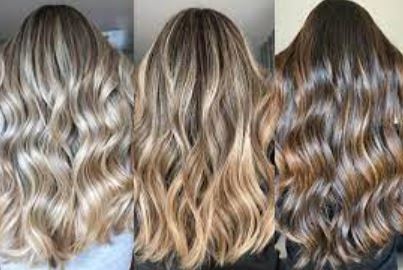Table of Contents
Hair color changes can be intriguing, with hair appearing darker or lighter during different growth stages.
Understanding the complex process of hair growth and its impact on color is essential for those curious about their changing locks.
This article delves into the fascinating world of hair growth stages to determine during which phase hair color tends to be darker.

From the active anagen phase with abundant melanin production to the resting telogen phase with subtle color changes, we explore the factors contributing to these transformations.
Discover the secrets behind your ever-changing hair color in this insightful piece.
Hair Color Is Darker During Which Stage Of Growth?
Have you ever noticed that your hair color seems to change at different times? Perhaps you’ve wondered why your hair appears darker or lighter during certain periods.
Well, the answer lies in the complex process of hair growth and the various stages it goes through.
In this article, we will delve into the fascinating world of hair growth stages and discover during which phase your hair color is darker.
Understanding Hair Growth
Before we explore the specific stages of hair growth, let’s briefly understand the process. Hair growth occurs in cycles, with each cycle comprising three main phases: the anagen phase, the catagen phase, and the telogen phase.
The Anagen Phase: Hair Growth Stage
The anagen phase is the active growth stage of hair. During this phase, hair follicles are actively producing new cells, and your hair is growing at its fastest rate.
This phase typically lasts for several years, depending on factors such as genetics and age.
Characteristics of the Anagen Phase
Hair in the anagen phase is strong, healthy, and full of color. Melanin, the pigment responsible for hair color, is abundant during this stage, giving your hair its natural shade.
The more melanin your hair contains, the darker its color will appear.
Melanin Production
Melanocytes, specialized cells in hair follicles, produce melanin. As long as the anagen phase continues, melanin production remains high, resulting in darker hair color.
The Catagen Phase: Transitional Stage
After the anagen phase, your hair enters the catagen phase, a short transitional stage lasting a few weeks. During this phase, the hair follicle shrinks, and hair growth stops.
While the catagen phase is not directly related to changes in hair color, it marks the end of active growth before entering the next phase.
Changes in Hair Color
Since the catagen phase is relatively short and hair growth stops, there are no significant changes in hair color during this stage.
The Telogen Phase: Resting Stage
Following the catagen phase, your hair progresses into the telogen phase, also known as the resting stage. In this phase, the old hair is shed, making way for new hair to enter the anagen phase again. The telogen phase can last for several months.
Impact on Hair Color
As the old hair sheds and new hair starts growing, the overall concentration of melanin decreases. This decrease in melanin content may make your hair appear slightly lighter than during the anagen phase.
However, it’s essential to note that the changes in hair color during the telogen phase are often subtle and not as noticeable as during other stages.
Factors Affecting Hair Color During Growth Stages
Several factors can influence hair color changes during different growth stages. Let’s explore some of the key factors:
- Genetics
Your genetic makeup plays a significant role in determining your natural hair color. Genes inherited from your parents influence the amount and type of melanin your hair follicles produce. Thus, individuals with more melanin tend to have darker hair.
- Age
As you age, the production of melanin in hair follicles may decrease, leading to graying hair. Age-related changes in melanin production can result in a gradual darkening or lightening of hair color.
- Hormones
Hormonal fluctuations, such as those occurring during pregnancy or menopause, can influence hair color. Changes in hormone levels can affect melanin production, leading to temporary alterations in hair color.
- Environmental Factors
Exposure to sunlight, pollutants, and certain chemicals can impact hair health and color. Prolonged exposure to the sun’s UV rays, for example, may lighten hair color over time.
Hair Products and Color Changes
Apart from natural factors, the use of hair products can also influence hair color changes:
- Chemical Treatments
Hair dyes, bleach, and chemical treatments can alter the natural color of your hair significantly. Regular use of such products can lead to darker or lighter hair, depending on the desired outcome.
- Natural Remedies
Some natural remedies, like henna and herbal rinses, can also impact hair color. While these remedies might not result in drastic changes, they can add subtle highlights or darken hair over time.
Tips for Maintaining Hair Color
To maintain your preferred hair color and promote healthy hair growth, consider the following tips:
- Use color-protecting shampoos and conditioners to prolong the vibrancy of your hair color.
- Limit the use of heat styling tools to prevent damage to your hair.
- Protect your hair from excessive sun exposure by wearing hats or using UV-protective products.
- Choose hair products formulated for your specific hair type and color.
- Schedule regular trims to prevent split ends and maintain overall hair health.
Conclusion
In conclusion, the darkness of your hair color is most prominent during the anagen phase of hair growth. This active phase is characterized by high melanin production, giving your hair its natural shade.
As your hair progresses through the catagen and telogen phases, subtle changes in hair color may occur due to shifts in melanin concentration and shedding of old hair.
Various factors, including genetics, age, hormones, and environmental exposure, can also influence hair color changes.
FAQs
Can stress affect hair color?
Stress can indirectly affect hair color by impacting overall hair health. Excessive stress may lead to hair loss, which can make your hair appear thinner and lighter.
Does hair color change naturally over time?
Yes, hair color can change naturally over time due to factors such as genetics and aging. Some individuals may experience a gradual darkening or lightening of their hair as they get older.
Are there any natural ways to darken hair color?
While natural remedies like henna and herbal rinses may add subtle color to your hair, there are no guaranteed methods to significantly darken hair color naturally.




